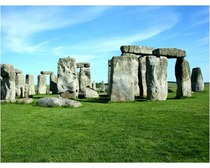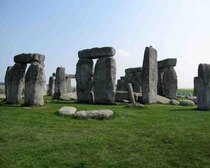Learn some interesting and fun facts about Stonehenge, the prehistoric monument, which dates back to 2500 BC.
Stonehenge Facts
Stonehenge is one of the most ancient monuments in the world. Built sometime around 2500 BC, the Stonehenge is a true reflection of the prehistoric times. There is no proper evidence of its builders and the reason as to why it was built. While some say it was a sacrificial altar or an astronomy tool, back in the 18th century, there are a few others who even proposed that Stonehenge was used as a gallows. Stonehenge is composed of earthworks surrounding a circular setting of large standing stones. To know some more interesting and fun facts about this prehistoric monument, read further.

Interesting & Fun Facts About Stonehenge
- Stonehenge is located on the Salisbury Plain in Wiltshire, England - about 137 kilometers Southwest of London.
- The origins of the name Stonehenge is taken from the combination of 'stone' and 'henge', a tribute to the biggest henge in Britain.
- Though there is no specific evidence about who built the Stonehenge. It is believed that Druids, Greeks, or Atlanteans might have built the Stonehenge.
- Stonehenge was constructed somewhere between 3100 – 1100 BCE.
- Stonehenge and its surroundings were added to the UNESCO's list of World Heritage Sites in 1986 and is also legally protected by the Scheduled Ancient Monument.
- Stonehenge is owned by the Crown and managed by English Heritage while the surrounding land is owned by the National Trust.
- The circle was aligned with the midsummer sunrise, the midwinter sunset, and the most southerly rising and northerly setting of the moon.
- The builders of Stonehenge have featured it in a way that it encompasses sophisticated mathematical and geometrical understandings of the framework and the structural engineering of the construction.
- Stonehenge has a henge, or a ditch and bank, which surround the large stone circle.
- The stones of Stonehenge were placed in such a way that they increase in size towards the centre and alternate in shape between tall, thin pillar-like stones and stones of a tapering obelisk shape.
- Two types of stone were used for the construction of Stonehenge- the 'bluestones' which weighed almost four tons and were brought from 240 miles away. The other type of stone used was the 'Sarsen' stones which had a height of about eighteen feet and weighed twenty-five tons.
- It is anticipated that more than thirty million hours of labor was required for the construction of Stonehenge.
- Stonehenge is the most well known among the nine hundred stone rings which exists in the British Isles.
- Most archaeologists believed that Stonehenge’s use had been limited to the ritual activities of different Neolithic chiefdoms before 1950. However, its use as an astronomical observatory was an equally important function of the Stonehenge.


See also
More from iloveindia.com
- Home Remedies | Ayurveda | Vastu | Yoga | Feng Shui | Tattoos | Fitness | Garden | Nutrition | Parenting | Bikes | Cars | Baby Care | Indian Weddings | Festivals | Party ideas | Horoscope 2015 | Pets | Finance | Figures of Speech | Hotels in India : Delhi | Hyderabad | Chennai | Mumbai | Kolkata | Bangalore | Ahmedabad | Jaipur
- Contact Us Careers Disclaimer Privacy Policy Advertise With Us Lifestyle Sitemap Copyright iloveindia.com. All Rights Reserved.







